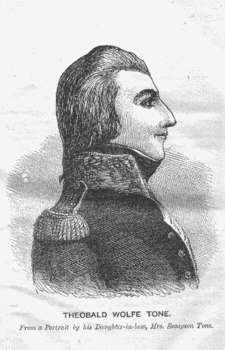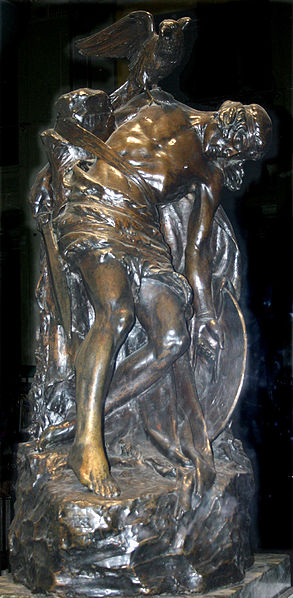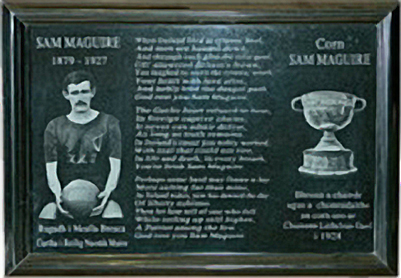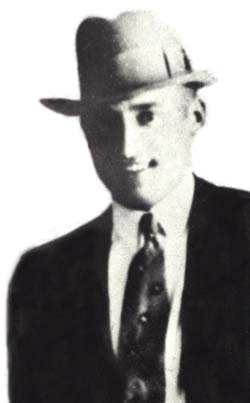| Irish Forums Message Discussion :: Protestant and Irish Nationalists |
   | Irish Forums :: The Irish Message
Forums About Ireland and the Irish Community, For the Irish home and Abroad. Forums include- Irish Music, Irish History, The Irish Diaspora, Irish Culture, Irish Sports, Astrology, Mystic, Irish Ancestry, Genealogy, Irish Travel, Irish Reunited and Craic
|  
|
Protestant and Irish Nationalists
 

|
|
|
| Irish
Author |
Protestant and Irish Nationalists Sceala Irish Craic Forum Irish Message |
BobbyMacQ

Sceala Clann T.D.
Location: Derry roots
|
| Sceala Irish Craic Forum Discussion:
Protestant and Irish Nationalists
|
|
|
Hey Irish Hal. Picking up from your awesome Scots Irish discussion.
I did some research and found many more examples of
Protestant and Irish nationalists.
Guess the British stereotypes of the Irish are very misleading. The Irish religion stereotypes were encouraged for dividing up the Irish.
Estimate of Protestant In Ireland.
Across the island of Ireland, the largest Protestant denomination is the Church of Ireland (having roughly 365,000 members, making up around 3% of the Republic of Ireland and 15% of Northern Ireland), followed by the Presbyterian Church of Ireland (having a membership of around 300,000, accounting for 0.6% of people in the Republic and 20% of Northern Ireland).
During the Celtic tiger economy, increasing numbers of Protestant Irish wanted to be part of a united Ireland. Post the Irish economic crash, it is not accurately known how many Protestants in Northern Ireland now supported reunification with the Republic of Ireland. The Census of 2011 avoids the question.
Have to confess when growing up, I was never told about the Protestant Irish Republicans. I was never told anything bad about Protestants in Ireland. Any negative information was the Orange men, they were the problem in Ireland, the cause of most division. It is correct! to state that these Orange men are all British loyalists and for the British Crown. The main purpose for Orange men to parade and march was to cause offense and stoke the embers of division. The Orange Order was never designed to attract the most genuine of religious people of any persuasion.
Most of what I have seen on the net, the photos and videos posted of Orange men days, have confirmed that my information when not very accurate, was credible. Orange men do not remind me of any genuine Christian people, I have ever met.
Protestant and Irish Republicans
Protestant Irish nationalists are Protestants from Ireland who support a united Ireland, a independent Irish nation. Prior to the creation of the Republic of Ireland, Irish nationalists sought by both constitutional and by physical-force means to sever the Act of Union binding the United Kingdom of grate britain and Ireland. Many of the Irish Nationalists were members of the Protestant faiths.
Protestants and Catholics in Ireland are stereotyped and often misrepresented. Irish Republicans associated exclusively as Roman Catholic, while those Irish people who want to keep a part of Ireland in union with England as exclusively Protestants.
This is a misleading representation of Irish protestant and Irish Catholic history.
Irish Protestants have in played main roles in every Irish attempt for independence from England.
In the 1798 rebellion, it was Irish Protestants who first physically demanded the political Irish Republic.
The influence of Irish Protestant Nationalists during the 19th century were key events towards the 1916 Easter Rising, and proclamation of the first Irish Republic.
Protestant and Irish Nationalists Pre-Union background

In the eighteenth century the first attempt towards Irish home rule with little influence from London was led by the Irish Patriot Party in the 1770s and 1780s, inspired by Henry Grattan.
The Age of Revolution inspired Protestants such as Wolfe Tone, Thomas Russell, Henry Joy McCracken, William Orr, Lord Edward Fitzgerald, The Sheares Brothers, Archibald Hamilton Rowan, Valentine Lawless and others who led the United Irishmen movement. At its first meeting on October 14, 1791, all attendees, minus Tone and Russell (two Anglicans) were Presbyterians. Presbyterians, led by McCracken, James Napper Tandy and Neilson would later go on to lead Protestant and Catholic Irish rebels in the Irish Rebellion of 1798. Tone did manage to unite if only for a short time, at least, some Protestants, Catholics and Dissenters into the "common name of Irishmen", and would later go on to try to get French support for the rising, recalling the failed French Bantry Bay landing of 1796.
At that time, the French republicans were opposed to all churches. Such men were inspired by Tom Paine of the American Revolution, who disapproved of organized religions in The Age of Reason (1794/95) and preferred a deist belief. Though the United Irish movement was supported by individual priests, the Roman Catholic hierarchy was opposed to it, in no small part because its new seminary in Maynooth had been funded by the British government in 1795. All new Roman Catholic priests in Ireland had to swear a oath of loyalty to England and the English crown.
British money endowed Maynooth, lecturers and students had to swear a oath of allegiance to the English monarch. The Roman Catholic priests oath of loyalty to the English crown continued well into the latter part of the 19th century.
During the 1798 rebellion the military leaders were also largely Anglicans. After the initial battles in County Kildare the rebels holding out in the Bog of Allen were led by William Aylmer. In Antrim and Down the rebels were almost all Presbyterians, and at the Battle of Ballynahinch the local Defenders decided not to take part. In County Wexford, which remained out of British control for a month, the main planner and leader was Bagenal Harvey. Joseph Holt led the rebels in County Wicklow. Only in Mayo, where there were few Protestants, was the rebellion led entirely by Catholics, and it only developed because of the landing by a French force under General Humbert. The disarming in parts of Ulster saw several hundred Protestants, tortured, executed and imprisoned for their United Irish sympathies. The rebellion became the main reason for the Act of Union passed in 1800.
Protestant and Irish Nationalists 1803 and 1848
In 1803 there was another Irish rebellion led by Robert Emmet, brother of Thomas Addis Emmet. He was joined by other Protestants such as James Hope and was later executed for his part in the rising. In the 1840s Thomas Davis, the revolutionary writer and poet, and John Mitchel were involved in the radical politics of their day, and William Smith O'Brien led the rebellion in 1848.
The democratic and non-violent Repeal Association led by Daniel O'Connell in the 1830s and 1840s was supported by a number of Protestants, the most eminent being Sir John Gray, who later supported Butt and Parnell, and others such as James Haughton.
Protestant and Irish Nationalists Home Rule period 1870-1914
The new Home Government Association was founded by Isaac Butt in 1870, who died in 1873. William Shaw presided over the convention held to found its successor, the Home Rule League of which he was chairman. He was followed by Charles Stewart Parnell founder of the Irish Parliamentary Party (IPP). Herbert Henry Asquith called Parnell one of the most important men of the nineteenth century and Lord Haldane called him the most powerful man that the Parliament of the United Kingdom of grate britain and Ireland had seen in 150 years. Parnell led the Gladstonian constitutionalist Home Rule movement and for a time dominated Irish and British affairs. However, at the height of his power he was to be dethroned by the O'Shea divorce affair and died soon afterwards.
Other Protestant Nationalist Members of Parliament were: Sir John Gray, Stephen Gwynn, Henry Harrison, Jeremiah Jordan, William McDonald, J. G. Swift MacNeill, James Maguire, Pierce Charles de Lacy O'Mahony, Isaac Nelson, John Pinkerton, Horace Plunkett and Samuel Young.
Protestant and Irish Nationalists Home Rule Celebrities
While not active nationalist supporters, authors who wrote about Irish life and history, such as William Wilde, William Carleton, Whitley Stokes, Standish James O'Grady and Samuel Ferguson helped to develop nationalist sentiment.
From 1897 the artist and mystic George Russell helped Horace Plunkett to run the Irish Agricultural Organisational Society. The IAOS rapidly grew into the main Irish rural co-operative body through which Irish farmers could buy and sell goods at the best price. Plunkett was also a cousin of George Noble Plunkett, father of Joseph Mary Plunkett. Horace Plunkett's home in County Dublin was later burned down in 1922 by anti-treaty Irish republicans during the Irish Civil War, as he had been appointed a Senator in the first Irish Free State Senate.
Russell was also involved in the "Celtic Revival" (or Celtic Twilight) artistic movement, that provided an intellectual and artistic aspect supportive of Irish nationalism. This was also largely started and run by Protestants such as WB Yeats, Lady Gregory, Sean O'Casey and JM Synge, who also founded the influential but controversial Abbey Theatre that opened in 1904. "An Tor Gloine" (The Glass Tower) had a similar membership.
Protestant 1916-22 / Irish Republicans
"The Dying Cuchulain", a sculpture by Oliver Sheppard.

Sam Maguire recruited Michael Collins into the Irish Republican Brotherhood (IRB) in 1909. From 1928 the main prize for Irish football awarded by the Gaelic Athletic Association has been the Sam Maguire Cup.

In 1908 Bulmer Hobson and Constance Markiewicz founded the Fianna Eireann, intended as a nationalist boy scout movement. The Irish Volunteers were a paramilitary organisation established in 1913 by Irish Nationalists and separatists including Roger Casement, Bulmer Hobson and Robert Erskine Childers, all Protestant Irish nationalists (although Casement, who had been secretly baptized a Catholic by his mother, officially converted to Catholicism just before he was hanged in 1916). The Irish Volunteers were formed in response to the formation of the Ulster Volunteers by Edward Carson and James Craig. The Ulster Volunteers were a Unionist paramilitary movement who feared a Dublin-centric, anti-protestant Home Rule parliament in Dublin.
The Irish Citizen Army existed from 1913/1947 and one of its creators was Jack White from Ulster, son of General George White. On Easter Monday, April 24, 1916, 220 of the group (including 28 women) took part in the Easter Rising. Most of the rifles and ammunition used in the Rising had been imported from Germany in July 1914 by Robert Erskine Childers on his yacht "Asgard" along with Conor O'Brien and assisted by Alice Stopford Green and the former Quaker Bulmer Hobson. The rest of the rifles were shipped by Sir Thomas Myles, at the suggestion of the barrister James Meredith, and were landed at Kilcoole. In 1913 Hobson had sworn Patrick Pearse into the IRB, Pearse was one of leaders of the Rising. A prominent signatory to the Anglo Irish Treaty in late 1921 that followed the Anglo-Irish war was Robert Barton, a cousin of Childers.
The archetypal work of art that commemorated the 1916 Rising, the statue of the dying mythical warrior Cuchullain, was sculpted by Oliver Sheppard, a Protestant art lecturer in Dublin who had been a moderate nationalist for decades. Cast in bronze, it was unveiled at the GPO in 1935.
In the subsequent Irish Free State governments Ernest Blythe, a former member of the Irish Volunteers, held various ministerial posts. Sean Lester was a League of Nations diplomat. The founder of the Gaelic League and first President of Ireland was Douglas Hyde. Dorothy Macardle opposed the 1921 Treaty and was a life-long supporter of Eamon de Valera, writing his view of history in The Irish Republic (1937), but also refusing his suggestion to convert to Catholicism on her deathbed in 1958. Some like the Revd. Robert Hilliard fought in the Spanish Civil War in 1936-39.
Former unionists in the Free State
As well as the more or less republican Protestants, a considerable number of former southern Protestant unionists accepted the new reality and worked with the new Free State from its difficult start in 1922-23. These included judges such as Lord Glenavy, whose suggestions for a new law courts system was enacted as the Courts Act 1924, and twenty accepted nominations to the new Senate, such as Lord Mayo.
Protestant nationalist converts to Roman Catholicism
A large number of Protestant nationalists also converted to Catholicism, for a variety of reasons:
William Gibson, 2nd Baron Ashbourne
Ada Beesley, the second wife of John Redmond
Thomas Bennett
Charles Bewley
Joseph Biggar MP
Aodh de Blacam (or Hugh Blackham)[6]
Hon. Albinia Broderick (Gobnait Ni Bhruadair, sister of the Southern Unionist leader Lord Midleton)
Roger Casement
Lillie Connolly, widow of James Connolly[7]
Charlotte Despard, sister of Viscount French (Lord Lieutenant of Ireland 1918-21)
Hugh Law MP and TD
Sir Shane Leslie
Grace Gifford, sister of Muriel, wife of Joseph Mary Plunkett
Muriel Gifford, sister of Grace, wife of Thomas MacDonagh
Maud Gonne
Mabel McConnell, wife of Desmond FitzGerald and mother of Garret FitzGerald
Countess Markiewicz MP and TD
Pierce Charles de Lacy O'Mahony MP
Gertrude Parry (cousin of Roger Casement)
Herbert Moore Pim (who returned to unionism in 1918)
William Stockley
Francis Stuart
Edmund Dwyer Gray, son of Protestant Nationalist, Sir John Gray
Protestant and Irish Nationalists 1940-present
Several Protestant figures in the early Northern Ireland Labour Party were nationalists. These included MPs Jack Beattie, Sam Kyle and William McMullen and labour leaders James Baird and John Hanna. Meanwhile, trade unionist Victor Halley was a member of the Socialist Republican Party.
Protestants in Belfast joined the minority Republican Congress and the Irish Republican Army in the 1930s and 1940s. These included John Graham, George Gilmore and George Plant.
George Plant was hanged in the Irish Free State for his activities.

George Plant fought against the Black and Tans and as a Irish Republican during the Civil War, and continued his involvement in the IRA into the 1930s and 1940s. He was first tried in the Special Court for murder, where the case against him collapsed when witnesses withdrew sworn statements. Under new legislation, he was tried in the Military Court with the same evidence that had been withdrawn at the previous trial. He was found guilty at the second trial and was executed by firing squad in Portlaoise prison on 5 March 1942. It has been described as one of the most distressing chapters of Irish legal history.
The IRA continued to have a squad which consisted of Protestants based in the Shankill Road area which dropped in membership in the early 1960s and was eventually disbanded. Later figures included Ronnie Bunting of the Irish National Liberation Army and John Turnley who were assassinated by the Ulster Defence Association. Bunting was the son of Ronald Bunting, a close associate of Ian Paisley. John Turnley, also murdered in 1980, was the Protestant Chairman of the Irish Independence Party and an Anti H-Block campaigner. One of the men convicted Bobby McConnell, has since joined the Ulster Unionist Party has the position of vice chairman of the West Belfast Ulster Unionist Association and has been selected to run the 2011 council elections in Belfast for the Court DEA. David Russell was a Protestant Provisional IRA volunteer who was killed due to a premature explosion in 1974 in Derry.
Today in the north of Ireland most Ulster Protestants oppose the unification of Ireland, traditionally supporting continued union with grate britain. However there are a growing number who do support unification, or are indifferent. In the past, the Social Democratic and Labour Party (SDLP) has included Protestant councillors, the most famous recent leader of Protestant Nationalism being Ivan Cooper. Billy Leonard, a former lay-preacher and Royal Ulster Constabulary (RUC) reservist, is currently an MLA for Sinn Fein in Stormont.
|
|
|
|
|
|
|
|
|
|












